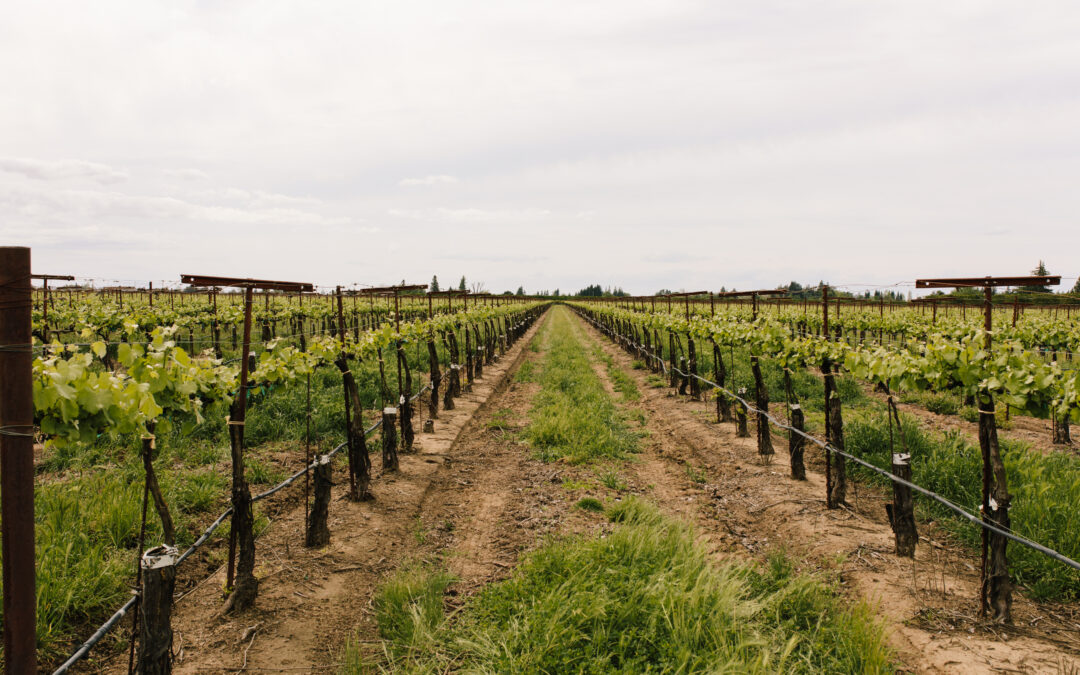MONDAY, MARCH 28, 2022. BY STAN GRANT, VITICULTURIST.
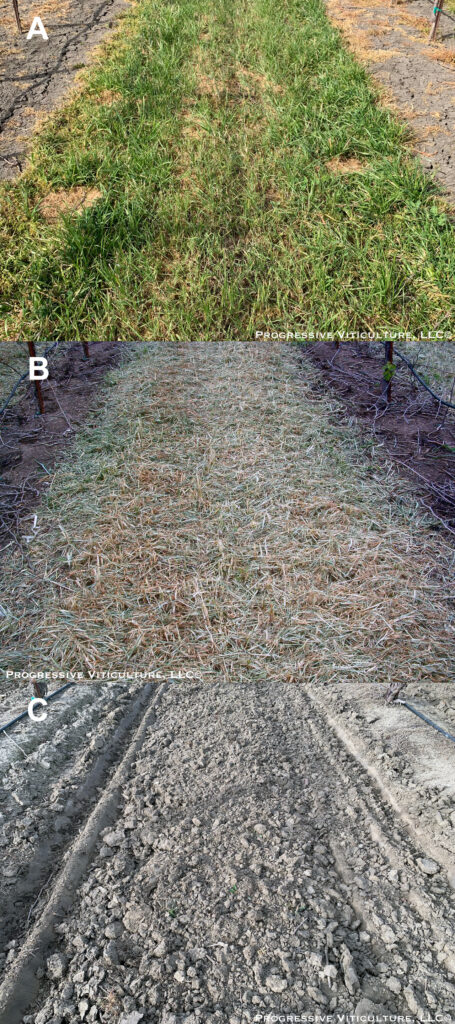
Figure 1. Surface characteristics of vineyard floors impact their effects, including the presence of vegetation (A), a cover crop residue mulch (B), or cultivated bare soil (C). (Photo Source: Progressive Viticulture, LLC©)
Although we walk and drive on them regularly, we tend to give little thought to vineyard floors other than those directed toward controlling weeds. And yet vineyard floors play pivotal roles in vineyards, residing at the interface between the vineyard atmosphere and soil, and affecting them both. Their influences are, in fact, complex, but here we will try to keep it simple. While the soil surface is seemingly the most crucial part of vineyard floors, they functionally extend several inches deeper.
The Nature of Vineyard Floors
Vineyard floors are, to varying degrees, reflective, absorptive, conductive, emissive, deflective, and permeable with regard to light, heat, air, and water. How they function depends on their slope, aspect, color, roughness, texture, organic matter content, structure, and wetness, and if present, the density, stature, and roughness of their vegetative cover (Figure 1).
The impacts of vineyard floors on vineyard environments above and below ground are usually greatest between leaf fall and budbreak. Their influence diminishes as developing grapevine canopies cover them.
Vineyard Floors and Energy
Vineyard floor characteristics determine the proportion of incoming (short-wave) solar radiation that is either absorbed or reflected back into the atmosphere (i.e. the energy balance). Absorbed radiation raises soil temperature, vaporizes soil water, and heats the atmosphere near the vineyard floor. Vineyard floors absorb a greater portion of incoming radiation as their roughness, density, organic matter, and moisture increase.
These facts are, of course, the basis for passive measures for minimizing frost damage in vineyards. In this effort, a bare, firm, dark, and moist soil surface most effectively absorbs incoming daytime radiation and emits heat (long-wave terrestrial radiation & water vapor) into a vineyard atmosphere at night. Tractor rows supporting closely mowed cover crops on moist soil act somewhat similarly.
Bare, firm, dark, and moist soil surfaces also readily absorb and conduct heat into upper root zones early in the growing season. Berms increase the absorptive surface area in vine rows, which enhances energy transfer where grapevine roots are concentrated (Figure 2). Early-season root zone heating promotes root activities, including the synthesis of hormones that promote budbreak and shoot emergence.
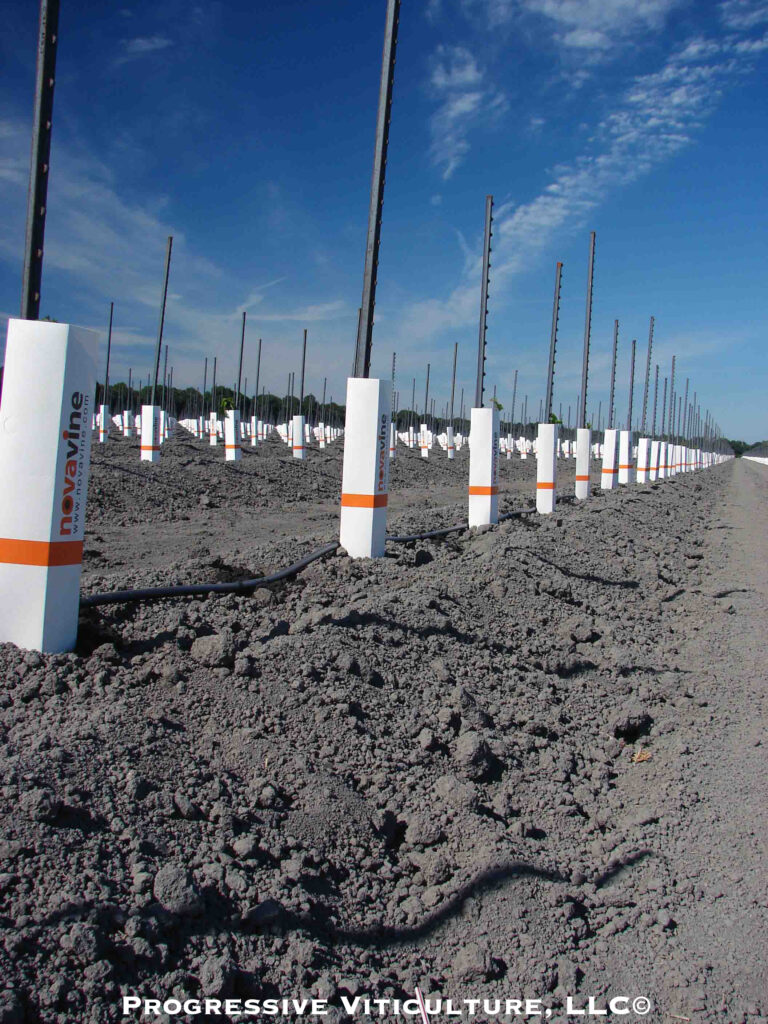
Fig. 2. Berms in newly established vine rows promote early-season root zone warming. (Photo Source: Progressive Viticulture, LLC©)
During the summer, bare, rough, and dark soil surfaces can advance fruit development in cool climates. For most of California, however, a vineyard floor with a cover crop or cover crop residues provides a cooler environment that can have favorable impacts on winegrape quality.
Vineyard Floors and Water and Air
Vineyard floors affect the balance of water and air in vineyards, as well as their energy balance. Bare, dry, and well-aggregated soils transfer water and air more readily than those disarranged through cultivation. In contrast, a moderately thin, uniform cap of loose cultivated soil (≥ 4 inches thick) restricts water infiltration and curtails water vapor loss to the atmosphere. Such friable soil surface layers, sometimes called dust mulches, are common in-season features in dry-farmed vineyards (Figure 3). In the absence of cultivation, most soil surfaces will, in effect, self-mulch as they dry and increasingly restrict evaporation from below.
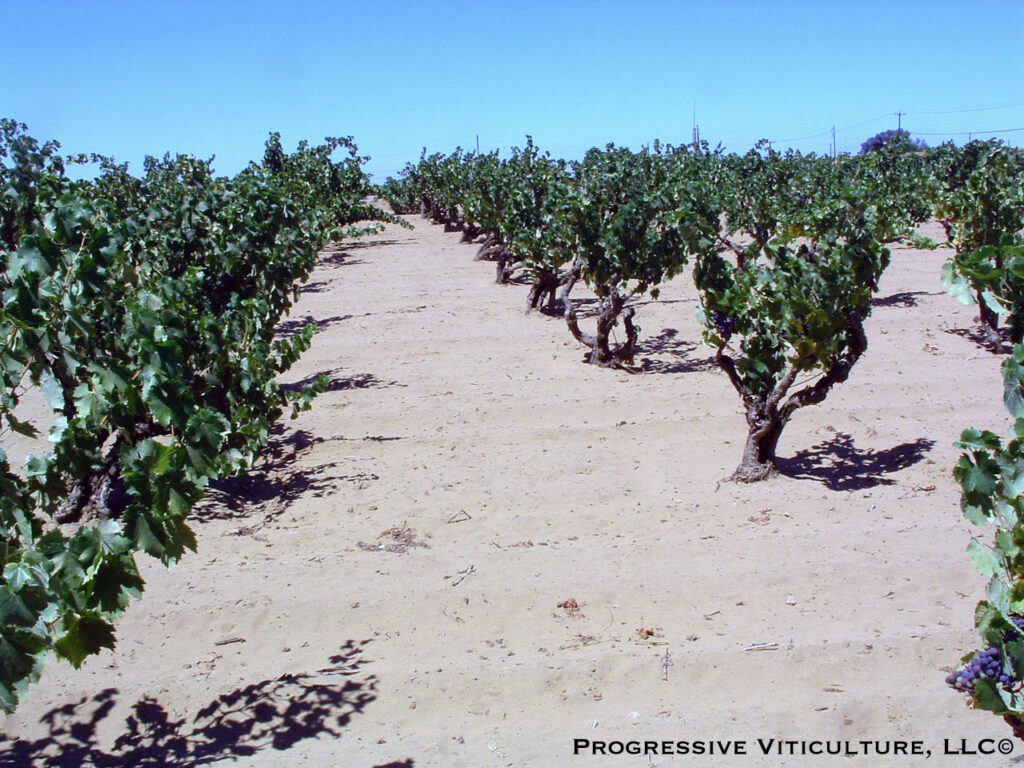
Figure 3. A cap of loose, unstructured soil (a dust mulch) conserves soil moisture in a rain-fed Mourvedre vineyard. (Photo Source: Progressive Viticulture, LLC©)
Floor surfaces in some vineyards on clay soils are changeable depending on their moisture content. Upon wetting, these soils swell and surfaces expand. Correspondingly, their porosity and permeability decrease. As they dry, these same soils shrink and their surfaces crack, and their permeability markedly increases (Figure 4). Evaporation from the insides of cracks draws moisture from soil well below the surface, which can delay the onset of self-mulching. Again, cultivation will loosen the surfaces of these vineyard floors, fill the cracks in them, and limit air and water transfer between soil and air.
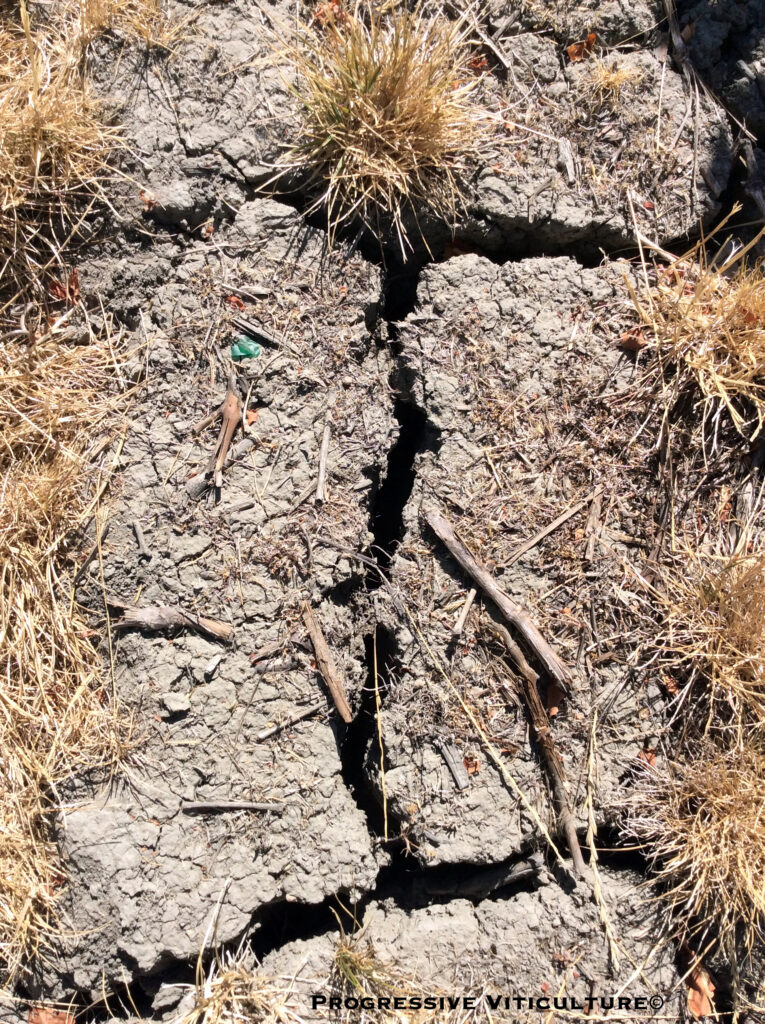
Figure 4. Soil cracks delay self-mulching and conservation of soil moisture. (Photo Source: Progressive Viticulture, LLC©)
Vegetated Vineyard Floors and Water
Cover crops also influence water balance, but their effects extend the vineyard floor to the height of their shoots and the depth of their root systems. Their above-ground structures, living or dead, break the fall of raindrops and disrupt and slow water runoff across vineyard floors. The presence of cover crop roots enhances water movement into surface soils. Simultaneously, they minimize the formation of crusts. The combination of these effects increases water intake and storage above what is possible with bare soil.
At the same time, cover crops consume water and hasten soil drying. Such consumption competes with vine water needs, which can be used to advantage to slow the growth of excessively vigorous vines early in the growing season. Fortunately for most vineyards where competition would be harmful, evaporative demand is very low and rainfall common while vines are dormant, and cover crops are easily terminated before their in-season water consumption becomes significant.
Still, even dead cover crops impact a vineyard’s water balance. Standing cover crop residues deflect air movement and cover crop clippings piled during mowing form a mulch when sufficiently thick. In both cases, evaporation from the vineyard floor is reduced.
Vegetated Vineyard Floors and Soil Conservation
Cover crops play one other significant role for vineyard floors. They reduce soil erosion due to wind and water. This role is important because surface soil lost through erosion is usually the most aggregated and porous portion of the root zone, as well as the most fertile and microbial active (Figure 5). Moreover, the loss of the soil surface exposes deeper soil that functions more poorly as a soil-atmosphere interface. Cover crops also suppress dust, which diminishes air quality and enables pest mites within vineyards.
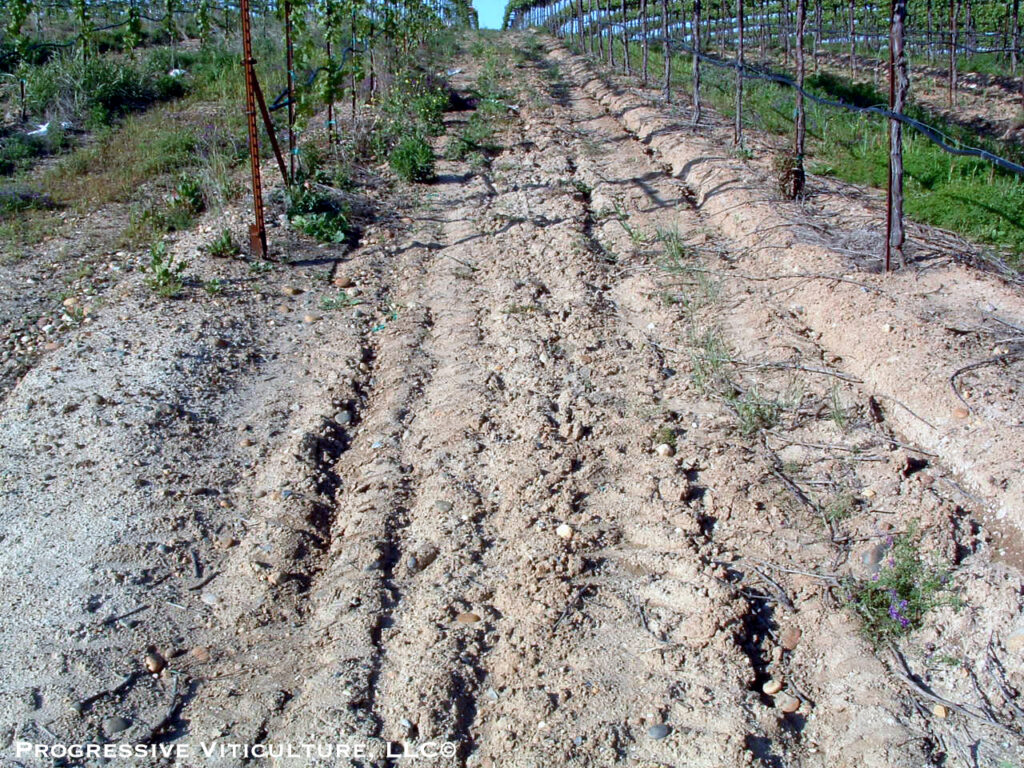
Figure 5. Surface soil lost through erosion decreases vineyard floor permeability to air and water. (Photo Source: Progressive Viticulture, LLC©)
Vineyard Floor Barriers – Surface Crusts and Compaction
In much of California, two types of surface crusts commonly occur on vineyard floors – structural crusts and depositional crusts. Both types restrict air and water exchange between the vineyard atmosphere and soil.
Structural crusts form when aggregates collapse and fill the cavities between them during wetting, and the surface subsequently seals upon drying. Raindrops and drip-applied water low in soluble minerals (electrical conductivity or EC < 0.5 dS/m) promote such crusts. Structural crusts are thin (≈ 1/32 to 1/16 inch). Their strength depends on the extent of aggregate breakdown and particle dispersion, degree of dryness, organic matter content, and relative proportions of adsorbed calcium, magnesium, sodium, and potassium.
Where runoff water crossing a vineyard floor is laden with sediments, depositional crusts will form as the water slows and particles settle. Some particles will penetrate and plug larger soil pores. Depositional crusts are usually thicker than structural crusts (≈ 1/8 to 1/2 inch). They are particularly a problem for very fine sand and silt soils.
Tillage disrupts both types of crusts and those tillage methods that leave a rough surface (e.g. shallow chisels, shovel cultivators, and sweeps) will delay crust reformation. Gypsum applications in irrigation water or to the soil surface can curtail structural crust formation where adsorbed sodium and magnesium are excessive (sodium base saturation > 6% or magnesium base saturation > 20%, respectively). And as mentioned above, cover crops improve soil permeability to air and water, including the permeability of soils covered with both types of crusts.
Surface soils, especially when bare and wet, are subject to compaction under the compressive forces of a wheel, track, and tillage equipment passing through a vineyard (Figure 6). Like crusts, compaction decreases vineyard floor porosity and permeability to air and water. However, the negative impacts of compaction typically extend deeper.
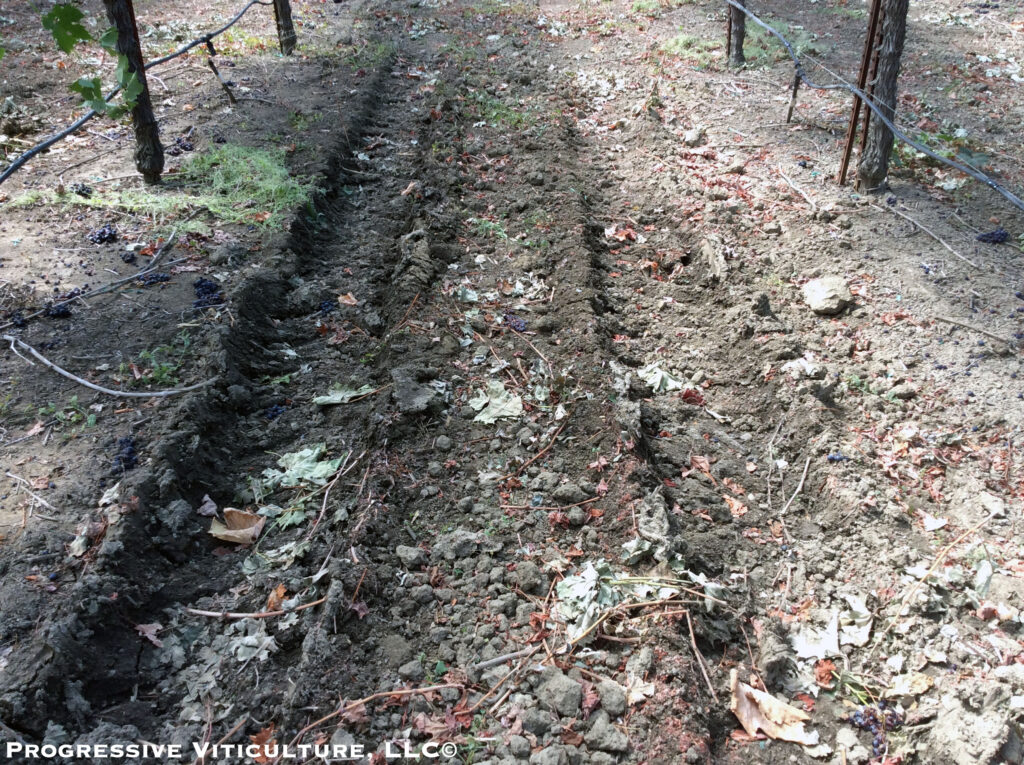
Figure 6. The low porosity of moist soil compacted under the weight of tractor wheels restricts air and water transfer across a vineyard floor. (Photo Source: Progressive Viticulture, LLC©)
Reduced compaction is one of the benefits of long-term cover crops and minimum tillage in vineyards. Nevertheless, mechanized vineyard operations always involve some amount of compaction, and periodic tillage, while soils are dry, is necessary to alleviate it.
In Closing
At this point, we can safely conclude vineyard floor management is much more than weed control. Vineyard floors are the interface between atmosphere and soil, impacting light, heat, air, and water, and influencing vineyard meso-climates and root zones. Through our management actions, we can use these effects to the advantage of our vineyards.
A version of this article was originally published in the Mid Valley Agricultural Services February 2015 newsletter and was updated for this blog post.
References
Aljibury, FK, Meyer, JL, and Wildman, WE. Managing compacted and layered soils. University of California Division of Agricultural Sciences Leaflet 2635. 1979.
Chancellor, WJ. Compaction of soil by agricultural equipment. University of California, Division of Agricultural Sciences Bulletin 1881. 1977.
Ekern, PC, Jr, Robins, JS, and Staple, WJ. Soil and cultural factors affecting evapotranspiration. In Hagan, RM, Haise, HR., Edminster, TW (Eds.). Irrigation of agricultural lands. American Society of Agronomy. Madison, WI. 1967.
Gates, DM and Hanks, RJ. Plant factors affecting evapotranspiration. In Hagan, RM, Haise, HR, and Edminster, TW (Eds.). Irrigation of agricultural lands. American Society of Agronomy. Madison, WI. 1967.
Gladstones, J. Viticulture and environment. Winetitles, Adelaide. 1992.
Grant, S. Using competition to best advantage in vineyard management. Lodi Winegrape Commission Coffee Shop. (www.lodigrowers.com). June 8, 2020.
Grant, S. The many uses and some misuses of gypsum in vineyards. Lodi Winegrape Commission Coffee Shop. (www.lodigrowers.com). November 18, 2019.
Grant, S. Frost management strategies for vineyards. Lodi Winegrape Commission Coffee Shop. (www.lodigrowers.com). April 03, 2017.
Grant, S. Considerations for dry farming wine grapes. Lodi Winegrape Commission Coffee Shop. (www.lodigrowers.com). January 19, 2015.
Grant, S. Maximizing cover crop benefits through selection and management. Lodi Winegrape Commission Coffee Shop. (www.lodigrowers.com). October 12, 2015.
Hillel, D. Introduction to soil physics. Academic Press, New York. 1982.
Levy, GJ. Chapter 14. Crusting. In Hatfield, JL and Sauer, TJ (Eds.). Soil management: building a stable base for agriculture. Agronomy Society of America and Soil Science Society of America. Madison, Wisconsin. 2011.
Oster, JD, Singer, MJ, Fulton, A, Richardson, W, and T Prichard. Water penetration problems in California soils. University of California Division of Natural Resources. Undated.
Penman, HL, Angus, DE, and van Bavel, CHM. Microclimatic factors affecting evaporation and transpiration. In Hagan, RM, Haise, HR., and Edminster, TW (Eds.). Irrigation of agricultural lands. American Society of Agronomy. Madison, WI. 1967.
Prichard, TL. Improving water penetration in vineyards. Lodi Grape Day Proceedings. Feb. 07, 2006.
Prichard, TL. Water use and infiltration. In Ingel, CA, Bugg, RL, McGourty, GT, and Christensen, LP (Eds.). Cover cropping in vineyards: a growers handbook. University of California Division of Agriculture and Natural Resources Publication 3338. 1998.
Severs, M. Strategic tillage has its place in no-till agriculture. Crops and Soils Magazine. 54, 4-8. Nov-Dec, 2021.
Have something interesting to say? Consider writing a guest blog article!
To subscribe to the Coffee Shop Blog, send an email to stephanie@lodiwine.com with the subject “blog subscribe.”
To join the Lodi Growers email list, send an email to stephanie@lodiwine.com with the subject “grower email subscribe.”
To receive Lodi Grower news and event promotions by mail, send your contact information to stephanie@lodiwine.com or call 209.367.4727.
For more information on the wines of Lodi, visit the Lodi Winegrape Commission’s consumer website, lodiwine.com.
For more information on the LODI RULES Sustainable Winegrowing Program, visit lodigrowers.com/standards or lodirules.org.

